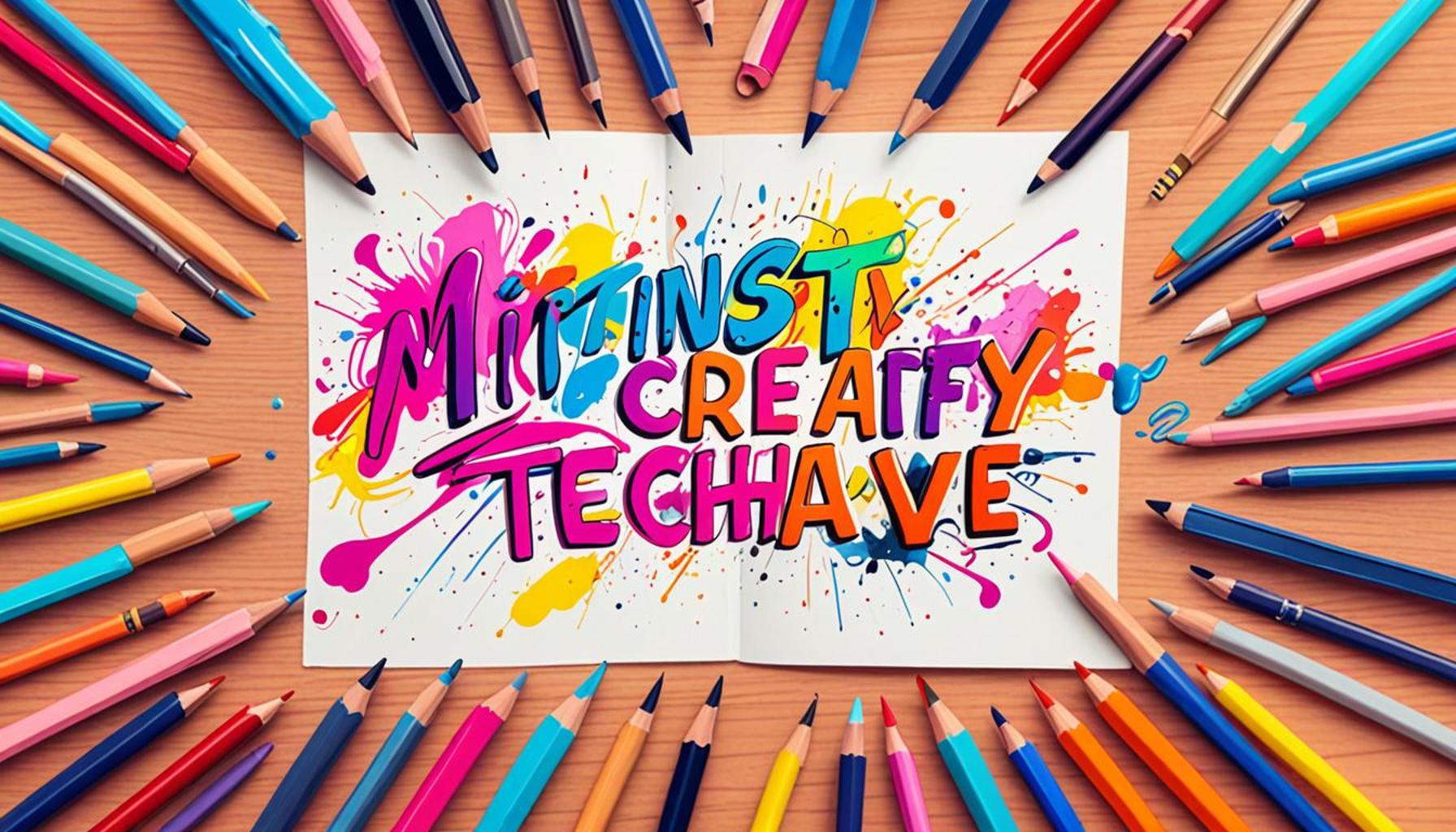First Draft Writing Techniques: How to Let Creativity Flow Without Fear of Mistakes

Unlocking the Door to Your Writing Journey
Writing isn’t merely a task; it’s an exploration, often filled with unexpected turns and delights. For many aspiring writers, the desire to create a flawless first draft can be a daunting obstacle that ultimately clouds their creativity. However, embracing first draft writing techniques can significantly enhance your writing experience and help unleash the latent storyteller within you.
Here are some essential strategies to help you navigate the winding paths of your creative journey:
- Let Go of Perfection: It’s vital to recognize that the first draft is just that—a rough sketch, not a final masterpiece. In the creative hubs of Nigeria, such as the bustling markets of Lagos or the tranquil village scenes in Enugu, artists often begin with a draft that is raw and evolving. Remember, Picasso was once a budding artist who, just like any writer, had to navigate his creative process).
- Set a Time Limit: Imposing a time limit can spur creativity and unlock spontaneous ideas. Try setting a timer for 20 minutes and challenge yourself to write without pausing. This technique can be particularly useful in Nigeria, where the rich tapestry of stories and experiences awaits your pen. You might be inspired by conversations overheard in the vibrant street corners or the tales of resilience shared by local artisans.
- Freewriting: Set aside ten minutes each day for freewriting—writing continuously without concern for grammar, spelling, or punctuation. This technique allows your subconscious thoughts to surface, enabling you to explore ideas that could lead to compelling narratives. Imagine writing about a local festival or a traditional meal you encountered; the essence of freewriting can help capture the beauty of these moments.
- Outline vs. No Outline: Consider whether you prefer outlining your ideas before you start or diving into the writing without a predetermined path. Both methods hold value. Outlining can provide a roadmap, particularly for intricate stories that reflect Nigeria’s diverse cultures, while writing without an outline can lead to unexpected twists and creative breakthroughs.
In Nigeria, where creativity flows from various landscapes—be it the quick tempo of city life or the calming grace of nature—these techniques resonate with writers and storytellers from all walks of life. Each writer has a distinctive voice and perspective waiting to break free from the confines of hesitation. By applying these techniques, you can liberate your creativity from the constraints of self-criticism.
As you familiarize yourself with these writing strategies, you’ll be better positioned to embrace mistakes as stepping stones toward your unique narrative style. The key is to explore these methods openly, allowing your writing to develop organically. Stay tuned for deeper insights into the art of first drafting, and embark on a thrilling journey that promises to enrich your storytelling skills!
SEE ALSO: Click here to read another article

Embracing Imperfection: The Path to Creative Freedom
For many writers, the first draft often resembles a daunting mountain to climb, with the fear of making mistakes acting as an immovable boulder at the base. It’s essential to understand that the first draft’s purpose is not to showcase perfection but rather to act as a playground for your imagination. Tackling the fear of judgment and the desire for excellence is crucial to unleashing your creative potential. Here are some techniques designed to help you embrace the process and get your ideas flowing.
- Use Prompt-Based Writing: Writing prompts can serve as fantastic starting points that ignite your creative spark. Whether it’s a phrase you overheard during a market trip in Lagos or an emotion you felt during an evening stroll by the Lekki-Ikoyi Link Bridge, prompts give you direction while allowing you to set sail into the unknown. Consider setting a goal of responding to a different prompt each week to keep your creativity alive and active.
- Practice “Writing in the Dark”: In this technique, you write without any prior research or notes, allowing your thoughts to flow freely. This method encourages spontaneity, revealing insights and connections you might not have considered. Imagine recounting a childhood memory—the sensations, sights, and sounds—this unfiltered approach can capture the essence of your experiences far more vividly than a polished narrative.
- Develop a Ritual: Establishing a writing routine can help signal to your brain that it’s time to unleash creativity. Consider the environment in Nigeria that inspires you—perhaps writing by the tranquil waters of the Niger River or in a lively café, buzzing with conversations. A special writing spot or even specific music can heighten your focus and pave the way for an imaginative outburst.
- Incorporate Visual Elements: Sometimes, words alone cannot bridge the gap between thought and expression. Including drawings, sketches, or even photographs in the writing process can provide visual stimulation that encourages your creativity. Capture the vibrant colors of a traditional dress or the intricate patterns of indigenous art. These elements can serve as prompts for your writing, guiding your story with rich description.
In Nigeria’s culturally diverse setting, embracing these first draft writing techniques can lead to the birth of powerful narratives that reflect personal experiences and societal truths. Each one of these strategies sets the stage for you to explore your creativity. Remember, the magic often lies in the unexpected twists and turns that arise when you allow your mind to roam free.
As you embark on this exhilarating writing journey, allow yourself to discard self-judgment and throw caution to the wind. The beauty of first drafts resides in their rawness, and these techniques will help you tap into that authenticity, forging stories that resonate not only with you but also with your audience. Let’s continue to explore more ways to improve our first drafts, revealing the storyteller within each of us!
Exploring Effective First Draft Writing Techniques
When it comes to crafting a compelling first draft, understanding how to unleash your creativity without the burden of perfectionism is key. One effective technique is to embrace freewriting, a process that encourages you to write continuously for a set period of time without worrying about grammar or structure. This is a powerful method that not only generates ideas but also ignites your creative flow. By allowing the words to spill out freely, you create opportunities for unexpected revelations and unique expressions, which can be refined later during the editing phase.Another beneficial approach is setting *time-limited goals*. Allocate specific time slots for writing sessions to create a sense of urgency. This can help mitigate the anxiety that often comes with drafting, as the focus shifts from crafting a flawless piece to simply getting thoughts on the page. Setting a timer for just 10 to 15 minutes can result in a surprising amount of material that serves as a foundation for further development.Also, consider utilizing the *concept of writing prompts*. These prompts can be a powerful tool to ignite your imagination and push through any creative blocks. By responding to a specific question or scenario, you can dive into areas of thought and creativity that you may not have explored otherwise. The practice not only expands your horizons but also reduces the fear of failure, as you’re given a starting point and creative constraints that can lead to more focused writing.Moreover, experimenting with various genres or styles can open new pathways for expression. Allow yourself to write in a different voice or perspective. This change in format can draw out fresh ideas and invigorate your writing process, as you liberate yourself from the confines of your usual style. Incorporating these techniques into your routine can transform your writing experience. Instead of viewing the draft as an endpoint that must meet standards, it can become a dynamic process wherein creativity thrives.
| Techniques | Benefits |
|---|---|
| Freewriting | Enhances creativity by removing self-judgment |
| Time-limited Goals | Promotes urgent writing, reducing perfectionism |
| Writing Prompts | Jumpstarts inspiration and combats writer’s block |
| Genre Experimentation | Encourages creativity by exploring different perspectives |
By exploring these techniques, writers can cultivate an environment where creativity flourishes, paving the way for engaging and innovative drafts without the constraint of fear.
ADDITIONAL INSIGHTS: Expand your understanding here
Unleashing Your Inner Writer: Techniques to Break Through Barriers
In your journey to crafting an uninhibited first draft, it’s crucial to dismantle the barriers of self-doubt and perfectionism. The following techniques are designed not only to help you write freely but also to encourage a deeper connection with your narrative. They can transform your writing experience into a joyful exploration of ideas and creativity.
- Set Time Limits: Sometimes, giving yourself a deadline can reduce the overwhelming urge to critique your work as you write. Instead of sitting down with the intent to write for hours, try setting a timer for just 15 or 20 minutes. In that dedicated burst of time, let your thoughts spill onto the page without filtering or deleting. This technique harnesses the concept of ‘sprints’ and enables prolific output, transforming even hesitant writers into confident storytellers.
- Create a Character Sketch: Fleshing out a character’s traits, background, and motivations can give you a roadmap for your narrative. Whether crafting a protagonist who mirrors the vibrant spirit of a Lagos street vendor or exploring the complexities of a rural farmer in Enugu, character sketches help anchor your draft. With a strong character foundation, the unfolding narrative flows naturally, allowing you to focus on dialogue and plot development without getting caught up in perfection.
- Use Recordings: For some, expressing thoughts verbally may feel more natural than writing them. Consider using an audio recorder or your smartphone’s voice memo feature to verbalize your ideas. This technique helps capture spontaneous thoughts and insights you might otherwise overlook. Later, you can transcribe—or better yet, revise—what you’ve recorded, turning vocal creativity into written form.
- Implement the “Stream of Consciousness” Technique: Allow your mind to flow freely onto the page in a continuous stream without worrying about structure, grammar, or coherence. Inspired by renowned writers like Virginia Woolf and James Joyce, this technique can be revelatory. Picture yourself in a bustling marketplace in Lagos, and begin writing without pauses. The rhythm of your thoughts might surprise you, unlocking emotions and ideas you didn’t know were trapped within.
These methods are not merely abstract; they are grounded in an understanding of the creative process, particularly in the context of Nigeria’s rich storytelling tradition. By engaging with these first draft writing techniques, you’re participating in a time-honored practice that connects your voice to a larger narrative continuum.
As you write, remember to let each stroke of the pen or click of the keyboard bring life to your story without overthinking or dwelling on corrections. Each draft is a significant step toward the finished product; it’s about exploration, growth, and discovery. Experiment with these techniques and watch as your creativity flourishes, allowing you to produce authentic narratives that resonate with your unique perspective.
YOU MAY ALSO LIKE: Read read another article
Embracing the Evolution of Your Writing Journey
As we navigate the intricate dance of creativity, the first draft writing techniques explored in this article serve as essential tools in dismantling the overwhelming pressures that often cloud our expression. By utilizing methods such as setting time limits, crafting character sketches, recording thoughts, and embracing the “stream of consciousness” approach, you can unlock a world of possibilities, transforming apprehension into artistic exploration. These techniques promote a liberating writing environment, where each word penned is a step towards unearthing your authentic voice.
In Nigeria—a country bursting with diverse narratives and rich traditions—your unique perspectives are crucial in contributing to the literary landscape. Each draft lays a foundational stone in your growth as a writer, offering valuable lessons that refine both your ability and confidence. Remember, the beauty of first drafts lies in their imperfections; they carry the raw essence of your creativity, waiting to be sculpted into polished masterpieces. So, allow yourself the grace to write without fear of mistakes.
In conclusion, as you embark on your writing endeavors, embrace these first draft techniques and let them guide you through the labyrinth of storytelling. The journey may be challenging, but with each uninhibited draft you write, you pave the way toward meaningful discoveries, personal growth, and a deeper connection to your narrative. Your creativity is a valuable asset—nurture it, celebrate it, and watch as it flourishes beyond your expectations.



